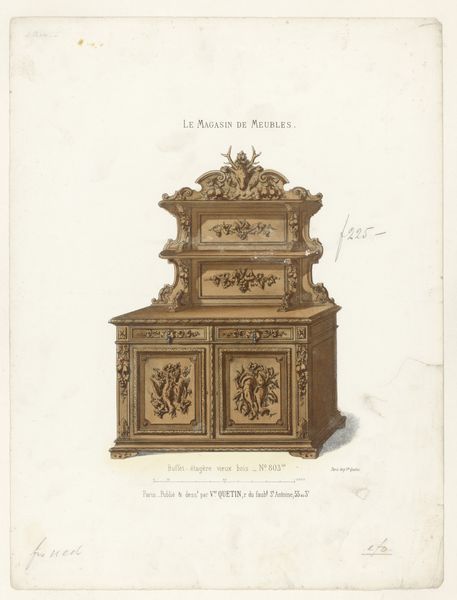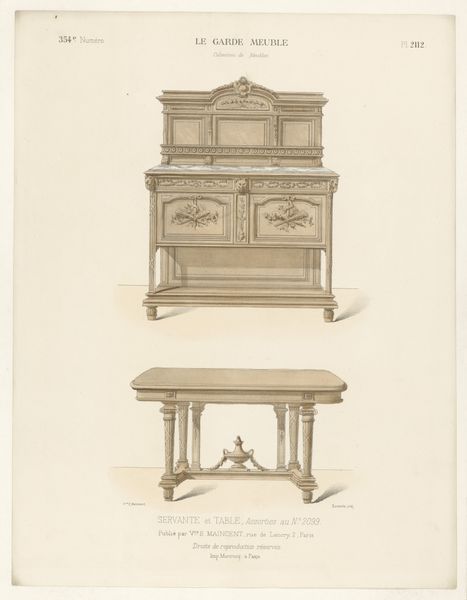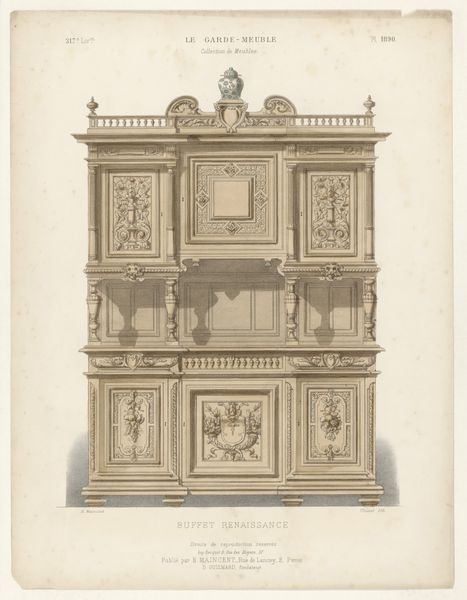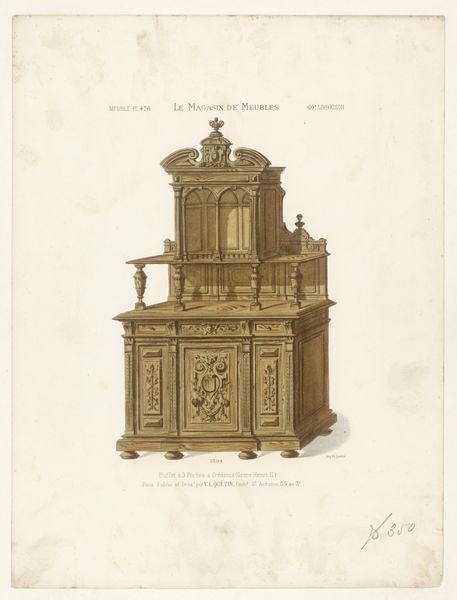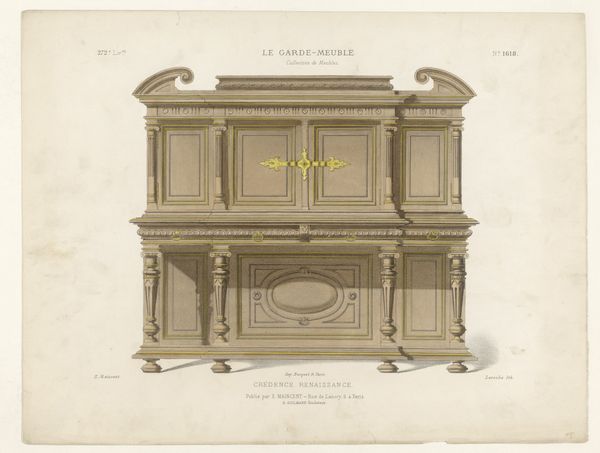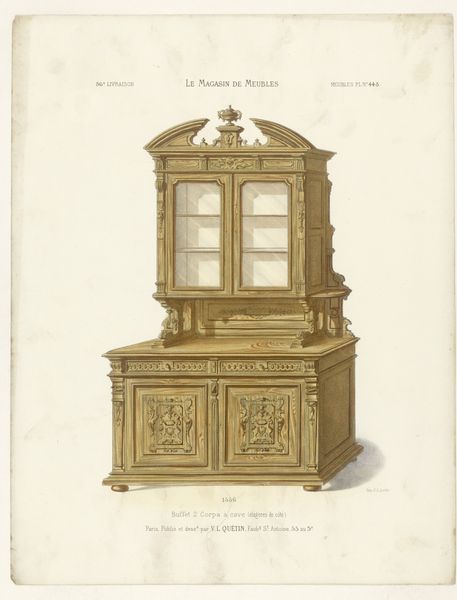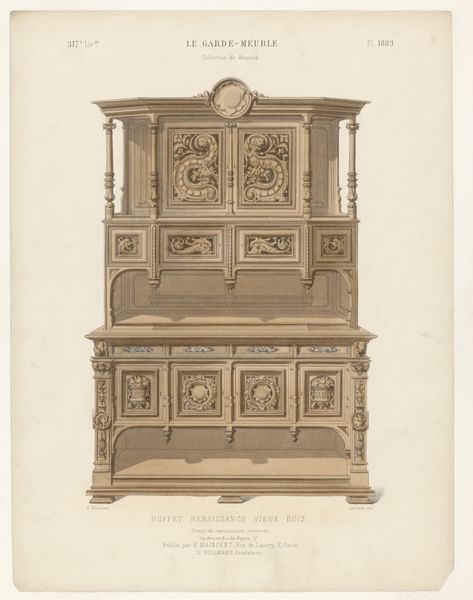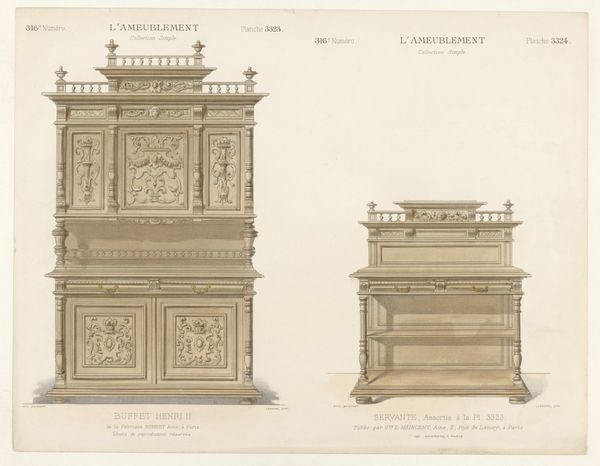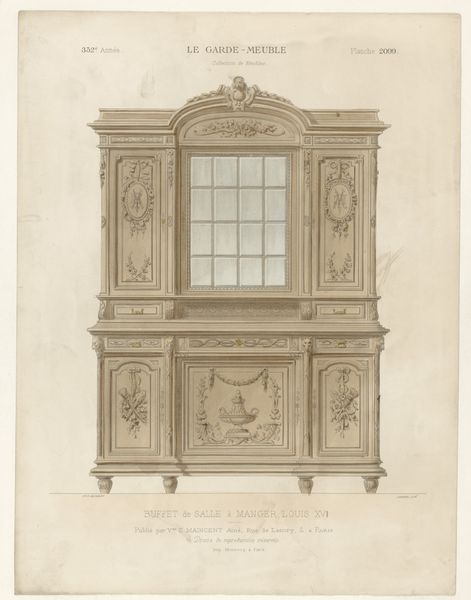
drawing, print, watercolor
#
drawing
#
neoclacissism
# print
#
furniture
#
watercolor
#
19th century
#
line
#
watercolour illustration
Dimensions: height 270 mm, width 357 mm
Copyright: Rijks Museum: Open Domain
Editor: Here we have an intriguing drawing, "Buffetkast," made sometime between 1832 and 1877, likely a print with watercolor. The precision of the line work combined with the muted palette feels so… deliberate. How do you read this piece from a formal perspective? Curator: Indeed. If we consider "Buffetkast" solely through its intrinsic qualities, what stands out is the meticulous application of line and the considered use of tonal variation. The symmetry, particularly in the cabinet's structure and the positioning of decorative elements, suggests a deliberate striving for balance and order, wouldn't you agree? Editor: Absolutely. The repetition of forms—those vertical panels, the decorative moldings—creates a strong sense of rhythm. I also notice the distinct separation of planes; it's very clear how the artist has defined the receding surfaces. Curator: Precisely. Consider the application of watercolor. Note how the washes subtly articulate form and texture without disrupting the overall linearity. What might this suggest about the artist’s intent and engagement with the object they depict? Editor: Perhaps that the artist focused on clarity, construction, and objective representation. It feels more about delineating an ideal form than capturing a specific material presence. So form dictates material, rather than the other way around? Curator: A keen observation. What have we learned by limiting our engagement with it this way, would you say? Editor: I see a renewed appreciation for the craftsmanship, and how technique shapes meaning. Curator: Precisely. By foregrounding the artist's construction, we unveil the underlying mechanics of representation.
Comments
No comments
Be the first to comment and join the conversation on the ultimate creative platform.
